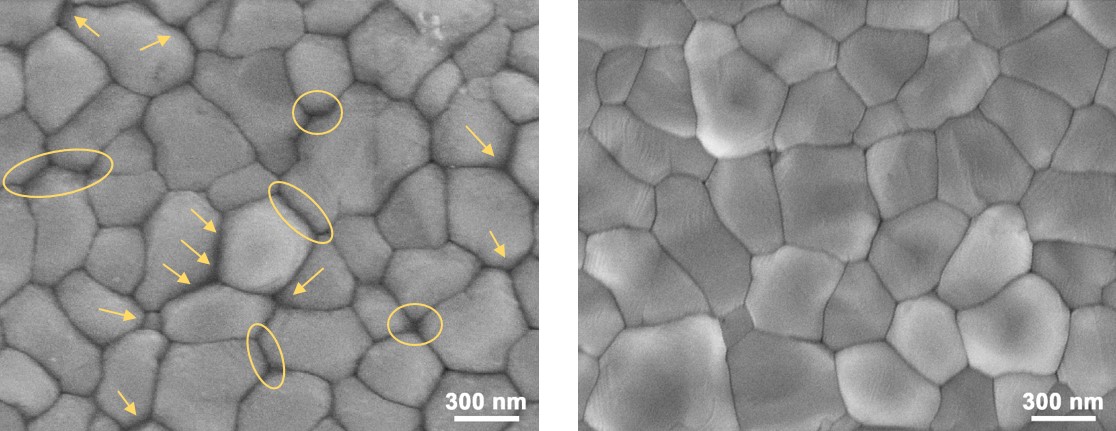Scientists led by Germany’s Helmholtz-Zentrum Berlin (HZB) developed an additive for perovskite materials, which it has shown acts a ‘cushion’, protecting the more delicate perovskite crystals from stress induced by changing temperatures.
The group was also able to add to HZB’s list of achievements – including the 32.5% efficiency record for a perovskite-silicon tandem cell – by fabricating perovskite cells using p-i-n architecture that achieved a record-setting 24.6% efficiency. This architecture is inherently more stable, but usually less efficient, than the more commonly used n-i-p design.
“Sunlight can heat up the inside of a PV cell to 80 Celsius; in the dark, the cell then cools down immediately to the outside temperature,” explained HZB Professor Antonio Abate. “This triggers large mechanical stresses in the thin layer of perovskite microcrystals, creating defects and even local phase transitions, so that the thin film loses its quality.”
The group found that working with a polymer compound it calls v-pV2F (full name b-poly(1,1-difluoroethylene) could improve the p-i-n solar cell’s stability even further.
“This polymer seems to wrap around the individual perovskite microcrystals in the thin film like a soft shell, creating a kind of cushion against thermomechanical stress,” Abate explained.
Perovskite solar cells fabricated with this additive were put through various tests, the results of which can be found in the paper Highly efficient p-i-n perovskite solar cells that endure temperature variations, published in Science.
Cells measuring 18 mm² reached a maximum efficiency of 24.6%, while larger 1 cm² devices achieved 23.1%. The cells were subject to more than 100 temperature cycles between 80 C and -60 C, as well as 1,000 hours of continuous illumination – which HZB says is equivalent to roughly one year of outdoor use.
These cells retained 96% of their initial performance after 1000 hours of simulated sunlight at 25 C, and 88% when the test was conducted at 75 C. In addition to its cushion effect, the additive was shown to improve the cell’s efficiency by affecting the transport of charge carrier, allowing the group to set the p-i-n device efficiency record.
HZB will now work to reduce the performance lost over time even further, to levels that might be considered acceptable in commercial devices.
“Even under these extreme stresses, they still achieved 96 % efficiency in the end. That is already in the right order of magnitude,” Abate noted. “If it is now feasible to reduce the losses a little further, perovskite solar modules could still produce most of their original output after 20 years – this goal is now coming within reach.”
This content is protected by copyright and may not be reused. If you want to cooperate with us and would like to reuse some of our content, please contact: editors@pv-magazine.com.




2 comments
By submitting this form you agree to pv magazine using your data for the purposes of publishing your comment.
Your personal data will only be disclosed or otherwise transmitted to third parties for the purposes of spam filtering or if this is necessary for technical maintenance of the website. Any other transfer to third parties will not take place unless this is justified on the basis of applicable data protection regulations or if pv magazine is legally obliged to do so.
You may revoke this consent at any time with effect for the future, in which case your personal data will be deleted immediately. Otherwise, your data will be deleted if pv magazine has processed your request or the purpose of data storage is fulfilled.
Further information on data privacy can be found in our Data Protection Policy.